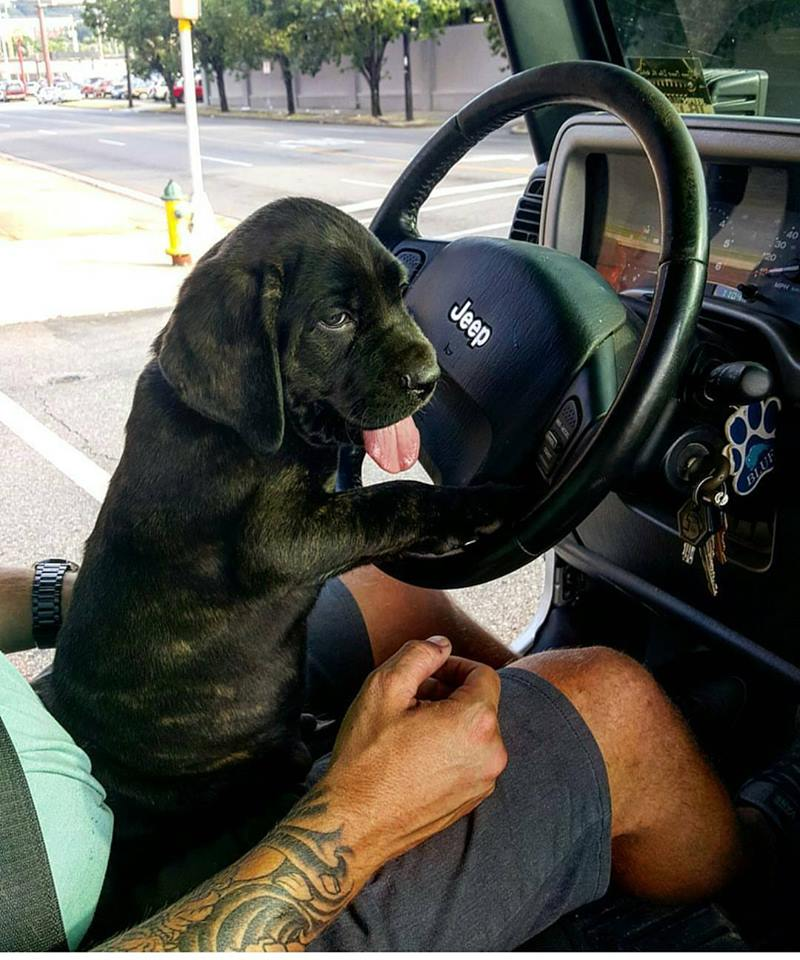Four Wheeling With Fido, A Guide for Going Off Road With Your Dog

If you are fortunate enough to have a four legged best friend then you know that dogs love car rides, dogs love adventure, and dogs love spending time with you. Why leave them at home when you head out for a day of off road adventure in your four wheel drive? With a little preparation and planning, you will find that your dog can make an excellent companion on your next trail run. However, you can not just toss your pooch in the back as though you were headed to the local dog park. For maximum enjoyment, and for your pet’s safety, you must be prepared for the unique challenges imposed by rough terrain, the natural environment, and the physical demands placed on your pup by a day of 4-wheeling.
Pest Protection
Your dog will love accompanying you on your off road adventure, but before you head out together make sure your pet is up to date with all its veterinary needs. A day of four wheel driving will take you off the beaten path and into nature, where your pet may be exposed to a number of risks. To minimize the dangers, make sure that they have an effective flea and tick preventative. While your pet is investigating its new surroundings they may encounter other animals, so be sure that all of its vaccines, especially for distemper and rabies, are up to date. Consider speaking with your veterinarian, about your pet and your planned route, and ask for any additional recommendations, such as whether or not to administer the Lyme disease vaccine. Once out on the trail, keep your dog secure and away from the local wildlife. Animals such as deer, skunks, and porcupines, and plants such as cacti and thorny underbrush, all present potential dangers to your dog.
Safe and Secure
When it comes to your dog riding in your four wheel drive vehicle, secure is safe. There are a number of alternatives for keeping your furry friend where they are supposed to be. Some four wheel drive enthusiasts prefer to keep their dog in a purpose designed crate, which can then be secured to hardpoints in the vehicle. This will keep your animal where they are supposed to be, even while negotiating obstacles that make the vehicle move in ways your dog may not be used to. If you do not want to crate your pup while on the trail, there are a number of harnesses that work in tandem with your vehicle's seatbelts to help keep Rover from coming over when he needs to stay. Also available are barriers that turn the rear cargo area of an SUV into a safe place for your pet. If your dog will be riding in the bed of a truck, make sure he is secured in such a way that he can't jump out, or halfway out, but instead remains tethered, as this would be extremely unsafe.
Leave No Dog Behind
Generally speaking, it is best to keep your dog close when in the wild. Drivers can be tempted to let their dog walk or run alongside of the vehicle, particularly in places where the trail demands slow progress. This can be dangerous, presenting the risk of accidentally running over your pet if you lose sight of them. Additionally, you do not want your dog to run away while your attention is elsewhere. There is always the chance that you may become separated from your pet. Be sure that your dog is wearing a sturdy collar, with a nametag that includes your pet's name, vaccination record, and your contact information. Speak with your veterinarian about having your dog microchipped for an extra level of security.
Pack for Your Pup
Miles down some remote and lonely trail is not the place to be when you find out that you need something you don't have. When it comes to having your dog with you, this is particularly true. Therefore make a dog checklist, and add it to what you usually bring along. A familiar water dish, and plenty of fresh cool water is a must. Take into account the weather. Make arrangements to keep your dog warm if heading out on a winter day. When the mercury rises, be sure you can cool your dog down. A hot dog is great on the grill, but heat stroke is a very real and potentially fatal condition to which dogs, with their fur coats and four legged stance are particularly susceptible.
Keep It Clean, Keep it Legal
It is important to know before you go whether or not dogs are allowed where you are headed. Many areas that are refuges for wildlife are off limits to dogs. Public lands, whether administered by the State or Federal government, have regulations regarding dogs, with the majority requiring that all dogs are kept on a leash at all times. If you are planning on stopping for any length of time, or camping overnight, bring a stake and leash so your pal doesn't wander but can still move around. Bring the necessary supplies in order to clean up after your pet. This is considerate to others making use of the area, as well as being better for the environment than letting the waste stay where it lay.





